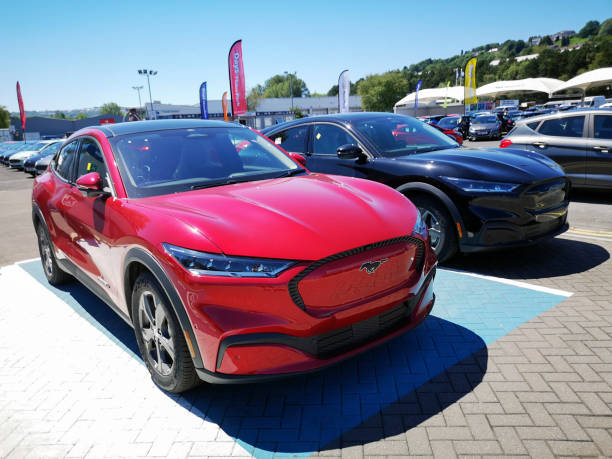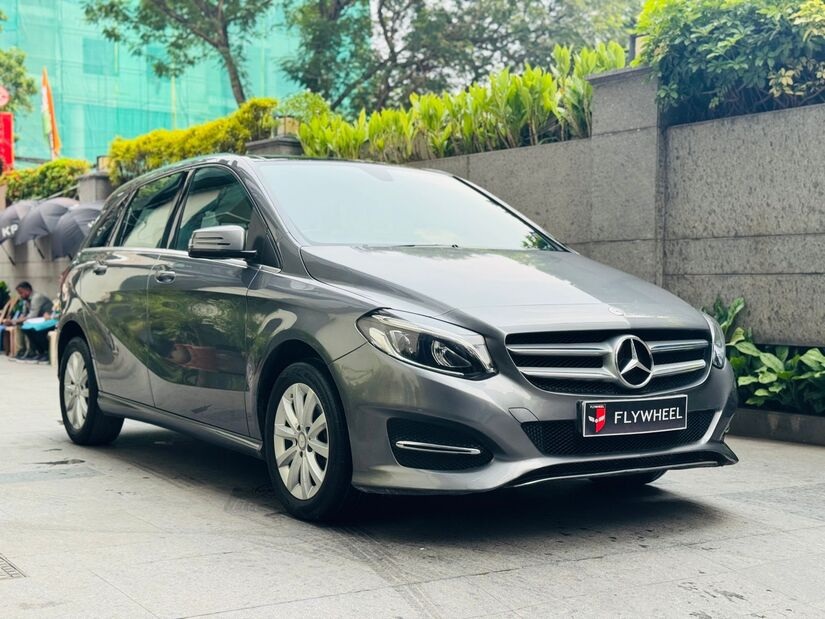Research and Preparation
Buying a used car is like going on a big adventure—exciting, but a little tricky too! You might score an awesome ride, or you could end up with a clunker if you don’t do your homework. So, how do you make sure you’re ready? It starts with some smart research and preparation.
Budgeting
First up, let’s talk money. How much can you really spend? It’s not just about the car’s sales price—you’ve got to think about taxes, insurance, and maintenance too. Fun fact: according to a 2023 AAA report, the average cost of owning a car is about $9,282 a year! That covers gas, repairs, and more. So, keep a budget in mind that includes all those extras.
Are you thinking about financing? That’s when you borrow money to pay for the car and make monthly payments. It can help, but watch out—things like the annual percentage rate (APR) and loan term can add up. A high interest rate might mean paying way more than the car’s worth over time. My tip? Check out credit unions—they often have better rates than banks, especially if your credit score is solid. A good credit score can be your secret weapon for snagging a fair price!
Choosing the Right Car
What kind of car fits your life? Do you need it for zipping to school or work every day? Maybe hauling your family around? Or tackling some off-road fun? Your needs will point you to the right body style—like sedans for city vibes, SUVs for family trips, or trucks for heavy lifting.
But don’t just go for the coolest-looking one! You’ve got to check if it’s reliable. Websites like Consumer Reports and J.D. Power are goldmines for ratings. They’ll tell you which cars last and which ones might need costly repairs. Ever wonder why some cars for sale seem too good to be true? Sometimes, they are! Want to know more, visit our website…
Model Research
Once you’ve got a few favorites, dig into the details. Look up specific models for common problems—like brake noises or engine trouble—and check for recalls. The National Highway Traffic Safety Administration (NHTSA) says about 1 in 4 used cars has an open recall, so don’t skip this step!
A vehicle history report is your best friend here. Tools like Carfax or AutoCheck can spill the tea on accidents, title issues, and service records. It’s like a sneak peek into the car’s past—did the previous owner take care of it, or is it hiding some expensive repairs?
Car History
Speaking of history, always grab that vehicle history report. It’s a must! It’ll show if the car’s been in a big crash, has a clean proof of ownership, or switched hands a bunch of times. Multiple owners might not be a dealbreaker, but it’s worth asking why. And don’t forget maintenance records—routine maintenance like oil changes means the car’s more likely to keep running smoothly. Gaps in those repair records? That’s a red flag for me.
Inspecting the Car
Okay, you’ve done the research—now it’s time to check out the car in person. This is where you play detective. Ready to spot the clues?
Exterior Inspection
Start outside. Walk around and look for dents, scratches, or rust on the body panels. Little stuff might not bug you, but big signs of damage could mean trouble. Ever notice mismatched paint? That’s a hint the car might’ve been in an accident. Check the brake lights too—do they work? And peek at the tires. Uneven wear could signal alignment issues, which isn’t cheap to fix.
Oh, and here’s a cool trick: bounce each corner of the car to test the shock absorbers. If it keeps bouncing, they’re worn out, and you’re in for a bumpy ride!
Interior Inspection
Now, hop inside. Are the seats torn or stained? Fixing upholstery can hit your wallet hard. Test everything—air conditioning, heating, the radio. A busted air conditioner in summer? No thanks! Sniff around too—smells like mold or smoke might mean water damage or a messy previous owner. That’s not the kind of surprise you want.
Under the Hood
Pop the hood next. Don’t worry if you’re not a mechanic—you can still spot the basics. Look for leaks, corrosion, or anything funky around the engine. Check the brake fluid, oil, and coolant levels—they should be full and clean. Dirty fluids? That’s a sign of neglect. Peek at the belts and hoses too—cracks or wear might mean basic maintenance got skipped.
Test Driving
Time for the fun part: test driving a used car! Start it up and listen—any weird noises when it’s idling? Hit the gas, tap the brake pedal, turn the wheel. Does it pull to one side or vibrate? That could mean mechanical issues. I like to drive on different roads—highways, bumpy streets—to see how it handles. Trust your gut—if it feels off, it probably is.
Extra Buying Tips
Here’s some bonus advice to give you peace of mind:
- Ask for repair records or a service contract. They show how the car’s been treated.
- Get an independent inspection or pre-purchase inspection. A pro mechanic can catch stuff you’d miss.
- Check the vehicle identification number (VIN) for recalls or ownership history.
- Look into warranty coverage. Certified pre-owned (CPO) cars from auto dealers often come with limited warranties, which is a sweet deal.
- Buying from a private owner? Be extra careful—dealerships might offer more protection.
- Haggle! Use Kelley Blue Book to find the market price and negotiate down from the sale price.
Buying a used car can save you cash—way less than brand-new cars—but it’s a big decision. Over 40 million used cars are sold yearly in the U.S. (per a 2022 Statista report), and I bet tons of buyers wish they’d been pickier. So, take your time, follow these steps, and you’ll find a ride that’s just right for you. Happy car hunting!
Evaluating the Seller
So, you’re buying a used car—exciting, right? But who you buy it from can make or break the deal. Let’s break it down and figure out what to look for.
Types of Sellers
First up, private sellers. These are just regular folks selling their own rides. The perk? You might snag a lower sales price since they’re not running a business. I mean, who doesn’t love a good deal? But here’s the flip side: if the brake lights go out a week later or the air conditioning quits, you’ve got limited recourse. No warranty coverage here, so you’re taking a bit of a gamble.
Then there’s dealerships—think big auto dealers or smaller used car lots. They often offer limited warranties or even certified pre-owned (CPO) cars, which come with extra checks for peace of mind. A 2023 Edmunds report says 40% of buyers go for CPO cars because they’re less likely to hide nasty surprises like water damage. The downside? Higher prices. You’re paying for that safety net, but for some, it’s worth it.
Red Flags
Now, whether it’s a private owner or a dealer, you’ve got to watch for sketchy stuff. Ever ask someone a simple question and get a vague, “Oh, uh, it’s fine” in return? Same vibe here. If they can’t give you a straight answer about the vehicle history report or dodge questions about the previous owner, that’s a red flag. You deserve to know what you’re getting into!
Pressure tactics are another nope. If they’re pushing you with, “Buy it now or it’s gone!”—take a step back. And if they won’t let you do a pre-purchase inspection or take it for a test drive? That’s a dealbreaker. Consumer Reports found in 2022 that 20% of buyers who skipped an independent inspection ended up with costly repairs. Don’t let that be you!
Negotiation Strategies
Alright, let’s talk used car negotiation tips. How do you land a fair price? Start by researching the market price on sites like Kelley Blue Book or Edmunds. Plug in the vehicle identification number, mileage, and condition, and boom—you’ve got a solid starting point.
Here’s my take: go in confident but chill. Offer a bit below what you’re willing to pay, and see where it lands. And if the seller won’t budge? Be ready to walk away. There are tons of cars for sale out there. Walking away might even get them to drop the price—works like a charm sometimes!
Legal and Financial Considerations
Buying a used car isn’t just about the car itself—it’s the paperwork and money stuff too. Let’s make sure you’re set.
Paperwork
First, the title. It’s the car’s proof of ownership, and it better be clear and in the seller’s name. If it’s not, you could be stuck with a mess. A bill of sale is your next must-have—it’s like a receipt showing you bought it fair and square. Oh, and ask about extended warranties or service contracts. If the car’s still got some manufacturer’s warranty left, that could save you from expensive repairs later.
Financing
Not paying cash? No worries—used car financing is super common. Check out loan options from banks, credit unions, or even dealerships. Credit unions often have sweet deals if your credit score is solid—think lower annual percentage rates. A 2024 Bankrate study says the average auto loan term is 69 months, but shorter loan terms mean less interest overall. So, weigh your monthly payment against the total cost, including finance charges.
Your credit score report matters here too. A higher score gets you better rates, so peek at it beforehand. And don’t sleep on those little extras like loan fees—they add up!
Insurance
Before you hit the road, you need insurance. Get quotes for stuff like liability or comprehensive coverage—prices can swing based on the car’s body style or brand-new cars vs. used ones. The Insurance Information Institute says the average insurance amounts for a used car hover around $1,200 a year, but a flashy ride might cost more. Factor that into your budget in mind, because nobody likes a surprise bill!
Post-Purchase Steps
You’ve got the keys—awesome! But there’s still some stuff to do to keep things smooth.
Mechanic Inspection
Even if you checked it before buying, have a trusted mechanic give it another look. Why? Hidden issues like bad shock absorbers or brake fluid leaks can pop up. A mechanical inspection post-purchase is like double-checking your homework—it’s worth it. A 2023 AAA study says 1 in 4 used cars has signs of damage missed by buyers. Catch it early!
Registration
Next, make it official. Transferring the car title and registering it in your name is a must—most states give you 30 days. You’ll likely pay sales tax or vehicle excise duty too, so don’t skip that step. Check your state’s rules with the DVLA’s 24-hour automated service or local DMV to avoid fines.
Maintenance
Finally, keep your car happy with routine maintenance. Follow the manufacturer’s maintenance schedule—think oil changes, checking the brake pedal, and keeping the air conditioner humming. Store those service records and repair records too; they’re gold if you sell later. AAA says regular basic maintenance can stretch a car’s life by 50%—that’s a no-brainer!
Buying a used car is a journey, but with these buying tips, you’re in the driver’s seat. Evaluate that seller, nail the legal stuff, and keep up with used car maintenance—you’ll be cruising with peace of mind in no time!
Common Mistakes to Avoid
Buying a used car can feel like a treasure hunt, but watch out—there are some traps you don’t want to fall into! Let’s break down the biggest used car buying mistakes and how to steer clear of them.
Skipping the Vehicle History Report
Why is that car such a steal? Well, have you checked its vehicle history report? Skipping this step is like jumping into a pool without knowing how deep it is. That report spills the tea on previous owners, ownership history, and whether the car’s been in a wreck or has water damage. According to Consumer Reports (2023), 25% of buyers who skipped this ended up with costly repairs. Don’t roll the dice—grab a report from Carfax or AutoCheck and get that peace of mind. It’s a small price to pay to avoid expensive repairs down the road.
Rushing the Test Drive or Skipping It Altogether
Think a test drive is just a joyride? Think again! Rushing through it—or worse, skipping it—is a rookie move. You need time to listen for brake noises, feel the brake pedal, and check if the air conditioner actually works. What about those brake lights and shock absorbers? A 2022 AAA study found that 30% of folks who didn’t test drive properly regretted it later because they missed stuff like weird handling or bad service records. Take it slow, hit some bumpy roads, and trust your instincts. If it feels off, it probably is.
Overlooking the Importance of a Mechanic’s Inspection
Sure, the car looks shiny, but what’s hiding under the hood? Skipping a pre-purchase inspection by a mechanic is like eating food without checking the expiration date—you might be fine, or you might be in for trouble. A pro can spot signs of damage, leaky brake fluid, or worn-out parts that could lead to expensive repairs. The National Institute for Automotive Service Excellence (ASE) says a mechanical inspection can save you over $1,000 by catching big issues early. Personally, I think that peace of mind is worth every cent—don’t you?
Failing to Negotiate the Price or Accepting the First Offer
Who just takes the first price they’re given? Not you, I hope! The sales price isn’t final until you say it is. Use Kelley Blue Book to check the market price and push for a fair price. A 2024 Edmunds report says buyers who haggle save about $1,500 on average. That’s cash for gas or snacks! Even with certified pre-owned (CPO) cars from auto dealers, you can still try. If the private owner or dealer won’t budge, walk away—there are tons of cars for sale out there waiting for you.
Ignoring the Total Cost of Ownership
Okay, the monthly payment looks good, but what about the rest? Buying a used car isn’t just about the sale price—you’ve got to think about fuel efficiency, insurance amounts, and routine maintenance. A gas-hog might seem cheap now, but the U.S. Department of Energy says the average car gets 25 miles per gallon—some used ones barely hit 15! That adds up fast. Also, check if there’s warranty coverage or a service contract to dodge costly repairs. Ignoring these extras is like forgetting to pack water for a hike—you’ll feel it later.
Conclusion
Buying a used car can be a smart move if you play it right. Let’s wrap up the big stuff we’ve talked about so you’re ready to roll with confidence.
Start with research and preparation. Set a budget in mind that covers the sales price, insurance costs, and even annual property tax. Pick a body style that fits your life—maybe a zippy sedan or a roomy SUV. Dig into the vehicle history report and maintenance records to make sure you’re not inheriting someone else’s mess.
Then, get hands-on with inspecting the car. Look for signs of damage on the body panels, test the air conditioning, and peek under the hood for leaks. A solid test drive lets you catch brake noises or shaky shock absorbers before you commit.
When evaluating the seller, keep your eyes peeled. Are they dodging questions about proof of ownership or rushing you? Whether it’s a private owner or a dealership, transparency is a must. And don’t sleep on negotiating—use Kelley Blue Book to snag a fair price.
For the legal and financial stuff, double-check the bill of sale, explore auto loan options from credit unions, and factor in sales tax. Your credit score might help you score a better annual percentage rate, so know where you stand. After you buy, get a mechanic’s inspection, register the car, and stick to basic maintenance to keep it humming.
Most importantly, dodge those used car buying mistakes we covered—like skipping the vehicle history report or rushing the test drive. Taking shortcuts can lead to expensive repairs or a car that’s more trouble than it’s worth. Buying a used car is a big deal, so take your time, ask tons of questions, and don’t let anyone rush you. In my opinion, a little patience now beats a big headache later.
Call to Action: Got a wild story from buying a used car? Drop it in the comments—I’d love to hear it! Or grab our free “Used Car Buying Checklist” to keep all these tips handy. Let’s make your next ride the best one yet!









